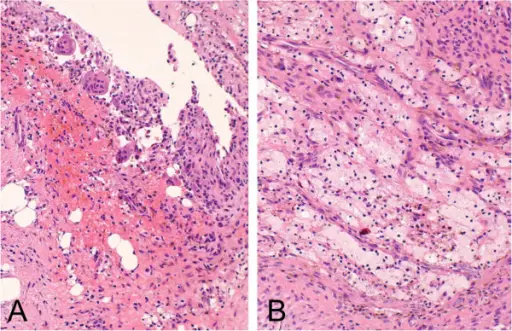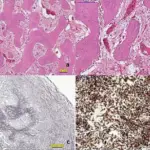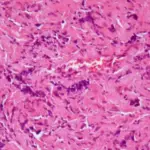Nonossifying fibromas are benign fibrohistiocytic tumors arising in the metaphysis of long bones of skeletally immature individuals, composed of bland fibroblastic proliferation mixed with osteoclast-like giant cells.
What is the Pathology of Nonossifying Fibromas?
The pathology of nonossifying fibromas is:
-Etiology: The cause of nonossifying fibromas is germline mutations resulting in activation of the KRAS-MAPK pathway.
-Genes involved: KRAS and FGFR1.
-Pathogenesis: The sequence of events that lead to nonossifying fibromas is the mutually exclusive hotspot mutations in KRAS and FGFR1.
-Histology: The histology associated with nonossifying fibromas shows bland, spindle-shaped fibroblasts arranged in a storiform pattern, interspersed with osteoclast-like multinucleated giant cells.
How does Nonossifying Fibromas Present?
Patients with nonossifying fibromas typically affect both males and females in the second decade of life. The symptoms, features, and clinical findings associated with nonossifying fibromas include pain, mild swelling, and soreness.
How are Nonossifying Fibromas Diagnosed?
Nonossifying fibromas are diagnosed by radiological and histopathological findings.
How are Nonossifying Fibromas Treated?
Nonossifying fibromas usually requires no treatment.
What is the Prognosis of Nonossifying Fibromas?
The prognosis of nonossifying fibromas is excellent, local recurrence is rare but reported.



